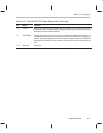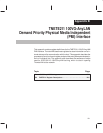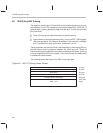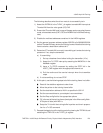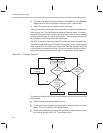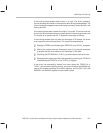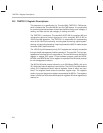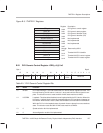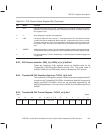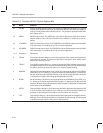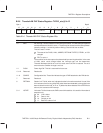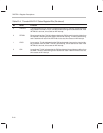
TNETE211 Register Descriptions
B-9
TNETE211 100VG-AnyLAN Demand Priority Physical Media Independent (PMI) Interface
Table B–2. PHY Generic Status Register Bits (Continued)
Bit Name Function
4 RFLT Remote fault: When this bit is set, it indicates that a remote fault condition has been
detected. This bit is autoclearing, and a remote fault condition is latched (held) until
the register is read.
3 0 Autoconfiguration capable: Not supported
2 LINK Link status: When this bit is read as 1, it indicates that the PHY has determined that
a valid link has been established. When read as 0, it indicates that the link is not valid.
This bit is autoclearing, and a link invalid state is latched (even if the link returns) until
the register is read. This is to ensure that the driver can determine the type of MII inter-
rupt.
1 JABBER Jabber detect: When read as 1, this bit indicates a jabber condition has been detected.
This bit is autoclearing, and a jabber condition is latched (held) until the register is read.
0
1 Extended capability: This bit is hardwired to 1 to indicate that the extended register set
is supported.
B.2.3 PHY Generic Identifier–GEN_id_hi/GEN_id_lo @ 0x2/0x3
These two hardwired 16-bit registers contain an identifier code for the
ThunderLAN 100VG-AnyLAN demand priority PHY. The actual value is
0x4000/ 0x502x for this PMI device, where x denotes the PHY revision.
B.2.4 ThunderLAN PHY Identifier High/Low–TLPHY_id @ 0x10
This hardwired 16-bit register contains a Texas Instruments-assigned identifi-
er code for the ThunderLAN PHY/PMIs. An additional identifier is required to
identify non-802.3 PHY/PMIs, which are not otherwise supported by the
802.3u MII specification. The value for the 100VG-AnyLAN demand priority is
0x0002.
B.2.5 ThunderLAN PHY Control Register–TLPHY_ctl @ 0x11
TINTINTENNFEWNPMDWTRIDLETRFAILPRLSRENPTLSWENMCRSIGLINK
Byte 0Byte 1
Reserved
0123456789101112131415



